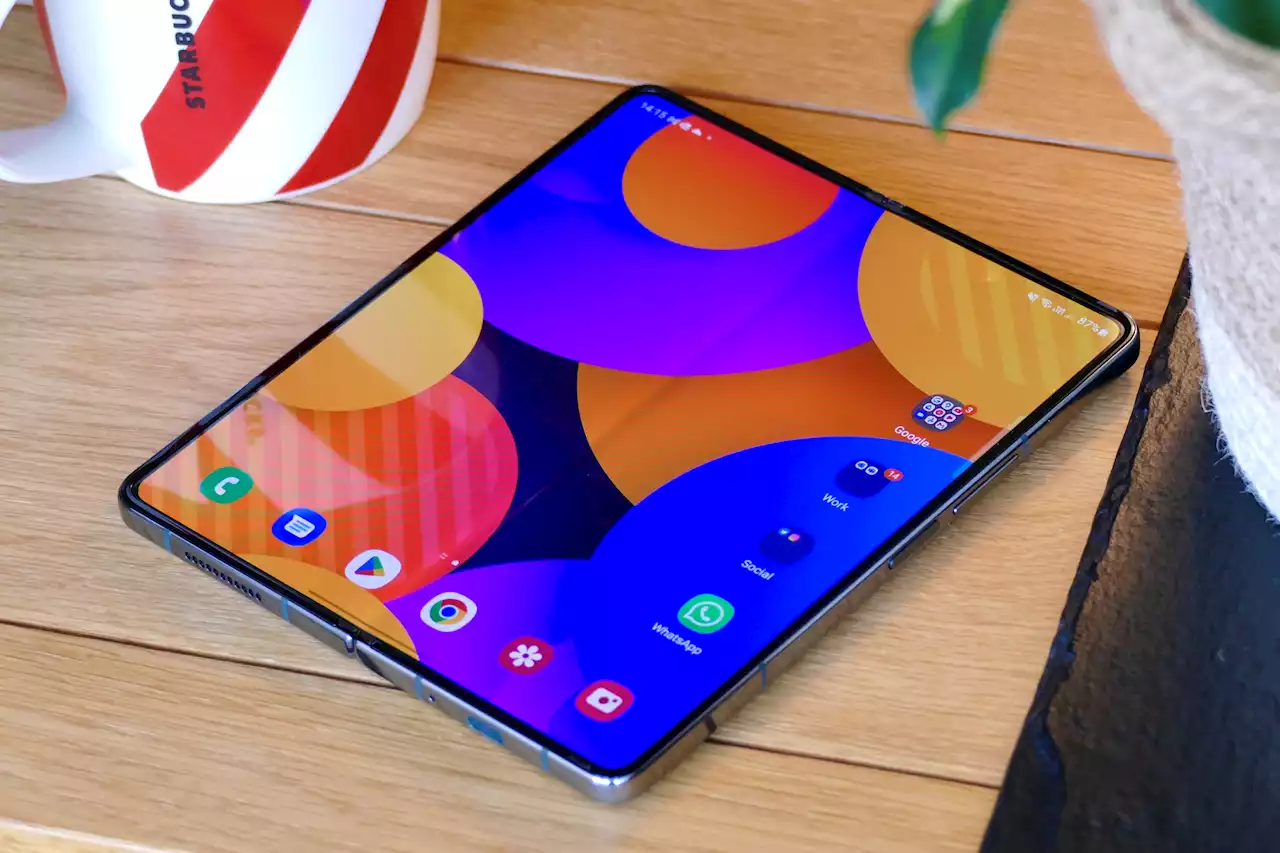The Galaxy Z Fold 4 may look quite a bit like the Z Fold 3, but the changes to it have made a big difference.
Samsung Galaxy Z Fold 4 MSRP $1,799.00 Score Details DT Editors' Choice “The Galaxy Z Fold 4 is less compromised, more powerful, and more durable than its predecessors. The battery struggles to keep up with its ability, but otherwise, it's one of the very best smartphones you can buy today.
Samsung explained that the changes to the size of the phone were made possible in part by a new hinge design. My Z Fold 3 is a year old and the hinge has settled into a very pleasant dampened motion after starting off pretty stiff. The Z Fold 4 has also started out life with less “give” than I’d like, but it’s likely to loosen up just like the Z Fold 3. It’s soundless with no audible grinding or anything awful like that, and there’s a nice thunk when the phone snaps closed.
Screens On the outside is a 6.2-inch Dynamic AMOLED screen with a 2316 x 904 resolution, a 120Hz refresh rate, and a 23.1:9 aspect ratio. Open the phone and you get a 7.6-inch Dynamic AMOLED, also with a 120Hz refresh rate, plus a 2176 x 1812 resolution. The refresh rate for the open screen varies between 1Hz and 120Hz, while the cover screen varies between 48Hz and 120Hz.
All Samsung apps and the core Google apps are really slick, though, and there’s something supremely satisfying about starting out in an app on the cover screen, and seamlessly swapping to the other screen when you open the Z Fold 4. For it to operate the other way around, you have to go into the Settings and manually force apps to continue on the Cover Screen from the inner screen. By default, they are all disabled, and closing the phone is very final, as the screen shuts off.
Software and performance The Galaxy Z Fold 4 makes use of Google’s Android 12L software, which has been made with larger screens in mind, and Samsung’s own OneUI 4.1.1 interface. Android 12L isn’t drastically different from regular Android 12, and Samsung hasn’t integrated the two-column Quick Settings layout, which is the most obvious visual change. Powering the phone is a Qualcomm Snapdragon 8+ Gen 1 processor with 12GB of RAM and your choice of 256GB, 512GB, or 1TB of internal storage space.
Previous Next 1 of 7 I’ve been consistently impressed with the Snapdragon 8+ Gen 1, having used it in the Asus Zenfone 9, the ROG Phone 6 Pro, and the iQoo 9T already. It’s clearly more efficient than the 8 Gen 1 and handles the strain of top-tier gaming and higher ambient temperatures better too. It doesn’t seem to get as hot in general, and that helps it cope with the demands put on it by the phone’s sheer ability.
You don’t get a charger in the box with the phone , and the Z Fold 4 supports 25-watt charging. A compatible charger took 88 minutes to recharge from 1% to full. The phone also supports wireless charging at a lower wattage, and the Wireless PowerShare feature will charge a Qi-compatible device placed on the back of the Z Fold 4 too.
Our take Small changes make a big difference. On paper, nothing about the Galaxy Z Fold 4 screams “huge upgrade” over the Z Fold 3, and it’s easy to assume it’s just an iterative update that doesn’t solve any of the issues people have with big folding smartphones. But that’s not the case. The small changes to the shape, weight, and specifications have made it a far more realistic everyday device for a lot more people, provided you can get past the high price.
